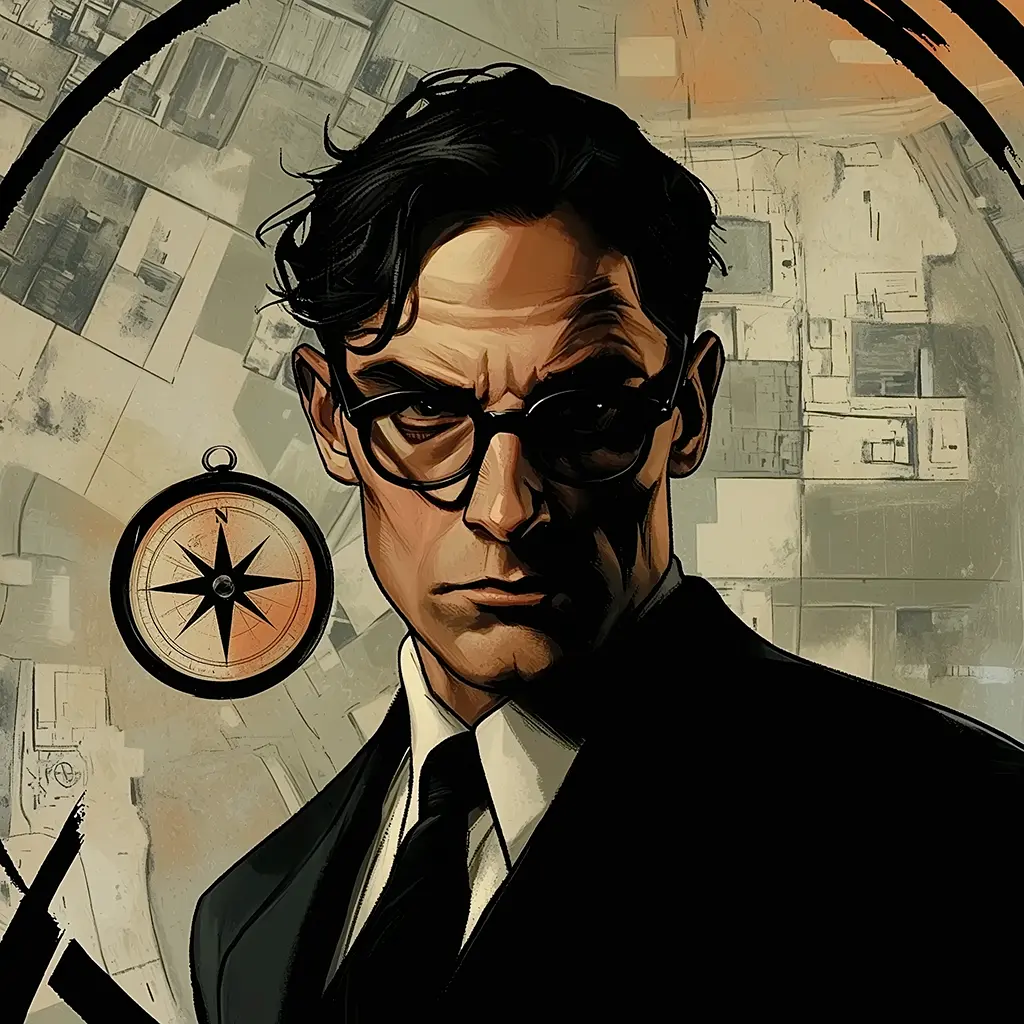Jorge Luis Borges: Death and the Compass. Summary and analysis
Death and the Compass, written by Jorge Luis Borges in 1942, is a detective story loaded with symbolism. Detective Erik Lönnrot investigates a series of murders connected by a cabalistic pattern. His obsession with logic leads him to interpret a series of clues in search of a solution to the mystery. As he deciphers the deaths, the reader is plunged into a labyrinth of mystical and mysterious concepts. With wit and a unique structure, Borges reflects on logic, chance, and the limits of human knowledge.





